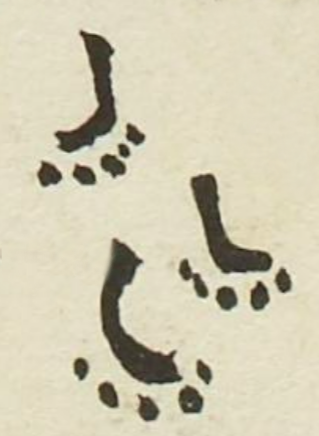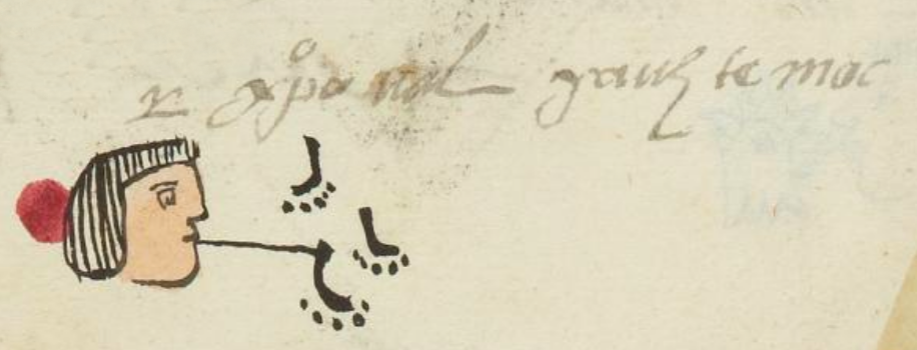Yauhtemoc (MH517r)
This simplex glyph for the personal name Yauhtemoc (perhaps "The Combatant Has Descended") includes three black footprints. They alternated, left-right-left, as they descended (temoc, which is the past tense of the verb temo, to descend). Also implied in this movement across the landscape is the verb to go (yauh) (in the present tense).
Stephanie Wood
Footprint glyphs have a wide range of translations. In this collection, so far, we can attest to yauh, xo, pano, -pan, paina, temo, nemi, quetza, otli, iyaquic hualiloti, huallauh, tepal, tetepotztoca, totoco, otlatoca, -tihui, and the vowel "o." Other research (Herrera et al, 2005, 64) points to additional terms, including: choloa, tlaloa, totoyoa, eco, aci, quiza, maxalihui, centlacxitl, and xocpalli.
Stephanie Wood
xopo ual yauhtemoc
Cristóbal Yauhtemoc
Stephanie Wood
1560
Jeff Haskett-Wood
footprint, footprints, huella, huellas, pies, pasos, steps, icximachiyotl, xocpalli, icxipamitl, descend, descender, bajar, nombres de hombres

yauh, to go, https://nahuatl.wired-humanities.org/content/yauh
temo, to descend, https://nahuatl.wired-humanities.org/content/temo
Matrícula de Huexotzinco, folio 517r, World Digital Library, https://www.loc.gov/resource/gdcwdl.wdl_15282/?sp=113&st=image
This manuscript is hosted by the Library of Congress and the World Digital Library; used here with the Creative Commons, “Attribution-NonCommercial-ShareAlike 3.0 License” (CC-BY-NC-SAq 3.0).





